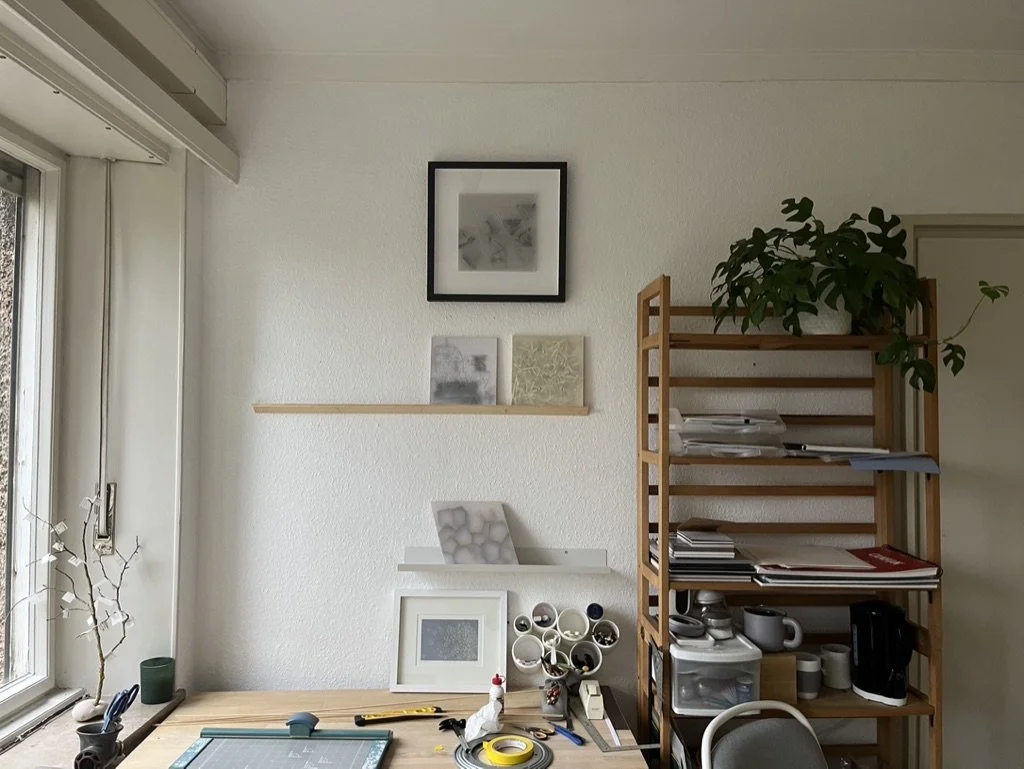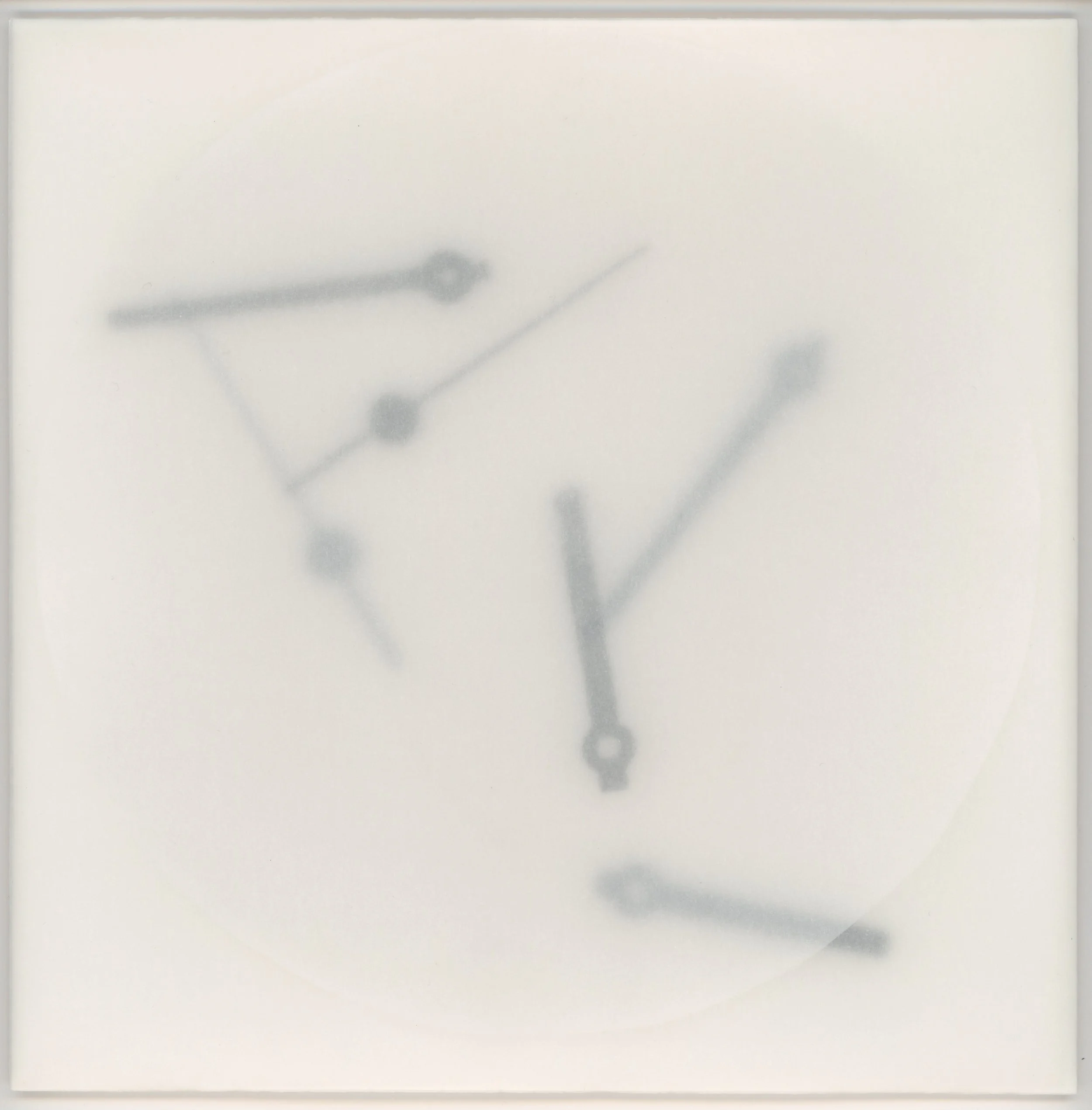Norma Márquez Orozco
New York City / Luxembourg
Website:
www.normaoro.com
Social Media:
Instagram
Facebook
How would you describe your work?
My work is mainly on paper, often featuring repetitions, I use geometric shapes as non-representational images, I also use organic shapes and figurative images, sometimes I use photographs, in contrast to empty spaces. The general appearance is of reduced forms, lines, and restricted colors.
Some of my works are made in such a way that the image can change, I do this by assembling the forms, that are the positive part of the work without fixing them, inside a box or a kind of envelope of translucent paper, allowing them to be seen, that with the movement of the work the composition transforms freely creating a new image, evoking the unpredictable patterns of nature, as well as the impermanence of beliefs and memories. I have works that focus on the changing physicality of our surroundings, like the sky that is always different. Others have additional content from the same perspective that relates to personal and family histories, hence themes such as time, absence, impermanence, beliefs, memories, and perception.
What inspires you?
Everything I encounter can be a source of inspiration, a landscape, a mountain, a worn wall, a conversation, a book, art. However, what motivates me to make a work of art is what creates in me a strong emotion with the desire to delve deeper and portray.
Can you speak about your process?
I could say that I am always working on several projects at the same time, and when I start a new idea, I try to focus until I see the finished piece. If it's part of a series, I might stop and continue with other work and sometimes come back to the series at another time or just stop. This may or may not depend on the goals I have set for myself. Some of my projects start from the beginning with a very clear idea, image, and execution, however, in the process I try to be attentive to notice other things that might come up and maybe reorient myself and even modify part or all of the project. In the process the intuitive and irrational aspect is always present, as well as the intentional and conscious, it's like a game in which you take turns.
I started working with translucency because I found that it allowed me to mimic the atmosphere and spaces where you can never see everything but nevertheless you know that there is always something else that is there, but you can't see it. From this vision I find it easier to explore the ideas of time, space, perception, memory, impermanence, which are recurring themes in my work. I also love the effect it produces and the possibilities it gives me to involve the environment where the piece is located, because the light modifies it, making it clear that I am a co-creator of my work.
How did you become interested in art?
For as long as I can remember I loved to draw, and spent many hours doing so, as well as playing with clay and other creative projects such as collage. I also remember spending hours looking at art books, something I can now appreciate as a totally natural inclination and interest. Also, I had an artist aunt, and seeing her paintings I think it made the idea of being an artist a little more tangible to me, although it wasn't until I finished my degree in Communication Sciences that I decided I was an artist.
Do you have any favorite artists, movies, books, or quotes?
I have many favorite artists, one of the first was William Turner, another I discovered as a child was John Everett Millais, to this day Ophelia is one of my favorite paintings. Vermeer mesmerizes me, Van Gogh is a continual discovery, and his letters are another source of beauty and wisdom. I also gravitate towards the work of artists such as Agnes Martin, Sol LeWitt, Carl Andre, Dan Flavin, whose work I admire for the strength and beauty of the minimal. James Turrell’s work is also one of the most fascinating I know. However, there are artists like Louise Bourgeois who always push me to have the courage to express any idea, as does Eva Hesse.
Albert Camus' The Stranger is one of the books that has influenced me the most. I recently reread Pedro Páramo by Juan Rulfo, and I am surprised by the great affinity I have with it, with the fading memories and the rupture of time and space. Besides literature, I have always been interested in philosophy, a book I have read several times is Tao Te Ching, by Lao Tzu. Science, especially psychology, is a long-standing interest, an essential book for me is Ernest Becker's The Denial of Death. In recent years I have become very interested in the workings of the brain, I constantly listen to podcasts on Neuroscience and read articles and books related to the subject.
Some of the films that I consider favorites because I have seen them several times and might see them again are Memento by Christopher Nolan, Finding Nemo by Pixar, Punch-Drunk Love by Paul Thomas Anderson, and Isle of Dogs by Wes Anderson.
“You won’t get anything unless you have the vision to imagine it” John Lennon
What advice do you have for younger artists?
Self-doubt is part of the creative process, accept it and keep making art!
Any more thoughts about art, creativity, or anything else you would like to share?
I see nature as a unit, emerging from a set of pieces that connect and interact in permanent transformation and growth. Hence, most of the image in my work is the result of a set of individual pieces that interact and can sometimes even change in the case of pieces that have movement, resembling jigsaw puzzles and kaleidoscopes. All my work has a ludic approach both in the elaboration and in the conception itself, to express the absurd, irrational, and out of control aspect of life.













